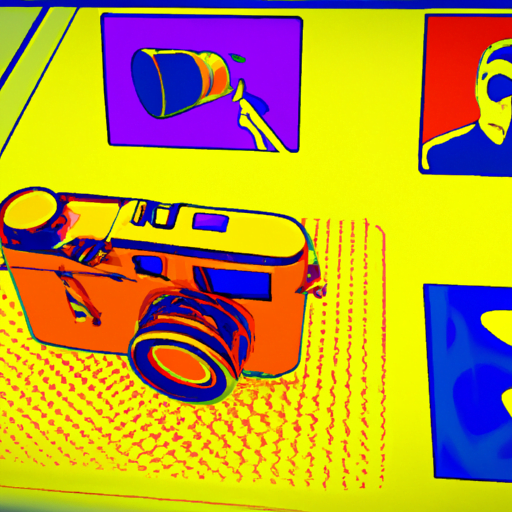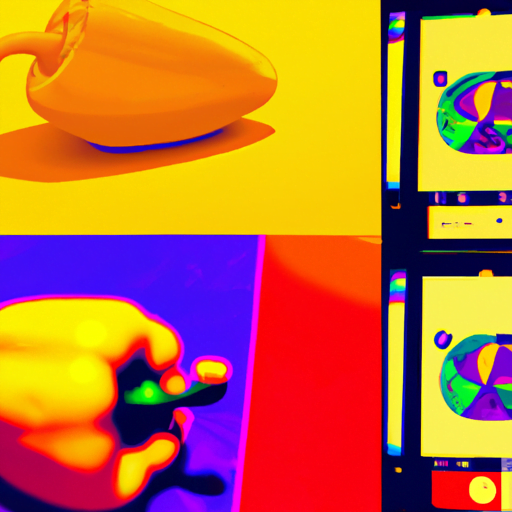
-
Table of Contents
- Exploring Augmented Reality in Graphic Design
- Understanding Augmented Reality
- The Role of Augmented Reality in Graphic Design
- 1. Interactive Print Design
- 2. Packaging Design
- 3. Environmental Design
- The Benefits of Augmented Reality in Graphic Design
- 1. Enhanced User Engagement
- 2. Improved Communication
- 3. Real-time Feedback
- Challenges and Considerations
- 1. Technical Limitations
- 2. User Adoption
- 3. Content Management
- Conclusion
Exploring Augmented Reality in Graphic Design

Augmented reality (AR) has emerged as a powerful tool in various industries, revolutionizing the way we interact with digital content. While AR is commonly associated with gaming and entertainment, its potential in graphic design is often overlooked. In this article, we will delve into the world of augmented reality and explore its applications, benefits, and challenges in the field of graphic design.
Understanding Augmented Reality
Before we dive into the realm of graphic design, it is essential to grasp the concept of augmented reality. AR is a technology that overlays digital information, such as images, videos, or 3D models, onto the real world. Unlike virtual reality, which creates an entirely immersive experience, AR enhances the real environment by adding virtual elements.
AR can be experienced through various devices, including smartphones, tablets, smart glasses, and headsets. By utilizing the device’s camera and sensors, AR applications detect the user’s surroundings and superimpose digital content onto the real world in real-time.
The Role of Augmented Reality in Graphic Design
Graphic design is a creative field that involves visual communication and problem-solving through the use of typography, images, and illustrations. Augmented reality opens up new possibilities for graphic designers to enhance their work and engage with their audience in innovative ways.
1. Interactive Print Design
AR allows graphic designers to bring static print materials to life by adding interactive elements. By scanning a printed image or design with an AR-enabled device, users can access additional content, such as videos, animations, or 3D models. This interactive experience bridges the gap between traditional print media and digital content, creating a more engaging and immersive user experience.
For example, IKEA, the Swedish furniture retailer, introduced an AR app that enables users to visualize how furniture would look in their homes. By scanning the pages of the IKEA catalog, users can place virtual furniture in their living spaces, allowing them to make more informed purchasing decisions.
2. Packaging Design
AR has the potential to revolutionize packaging design by adding an extra layer of information and interactivity. By scanning a product’s packaging, consumers can access detailed product information, instructional videos, or even play games related to the product. This not only enhances the user experience but also provides brands with an opportunity to communicate their values and engage with their customers on a deeper level.
One notable example is the collaboration between Coca-Cola and Shazam, a popular music recognition app. Coca-Cola introduced AR-enabled packaging that, when scanned with the Shazam app, transformed into a virtual music experience. This creative use of AR not only increased consumer engagement but also generated valuable data for Coca-Cola.
3. Environmental Design
AR can be a game-changer in environmental design, allowing designers to create immersive and interactive experiences in physical spaces. By overlaying digital content onto real-world environments, designers can transform ordinary spaces into captivating and informative installations.
For instance, the Museum of Modern Art (MoMA) in New York City incorporated AR into its exhibition design. Visitors can use the MoMA AR app to view additional information, videos, and interactive elements when they point their devices at specific artworks. This integration of AR enhances the visitor’s understanding and engagement with the artworks, providing a more enriching museum experience.
The Benefits of Augmented Reality in Graphic Design
Augmented reality offers numerous benefits to graphic designers, enabling them to push the boundaries of their creativity and deliver more impactful designs. Here are some key advantages of incorporating AR into graphic design:
1. Enhanced User Engagement
AR creates a more immersive and interactive experience for users, capturing their attention and increasing engagement. By adding virtual elements to graphic designs, designers can evoke emotions, tell stories, and convey information in a more compelling way. This heightened engagement can lead to better brand recognition, increased sales, and improved user satisfaction.
2. Improved Communication
AR allows designers to communicate complex ideas and concepts more effectively. By overlaying additional information or interactive elements onto their designs, designers can provide users with a deeper understanding of the subject matter. This enhanced communication can be particularly valuable in educational materials, infographics, and instructional designs.
3. Real-time Feedback
AR applications provide designers with real-time feedback on their designs. By testing their designs in an AR environment, designers can quickly identify any issues or areas for improvement. This iterative process allows for more efficient design workflows and ensures that the final product meets the desired objectives.
Challenges and Considerations
While augmented reality offers exciting possibilities for graphic designers, there are also challenges and considerations that need to be addressed:
1. Technical Limitations
AR experiences heavily rely on the capabilities of the devices used to access them. Different devices may have varying levels of performance, camera quality, and tracking accuracy, which can affect the overall user experience. Designers need to consider these technical limitations when creating AR content to ensure optimal performance across different devices.
2. User Adoption
Although AR technology has gained popularity in recent years, it is still not widely adopted by the general public. Designers need to consider the accessibility and ease of use of their AR designs to encourage user adoption. Providing clear instructions and intuitive user interfaces can help overcome the barriers to entry and ensure a seamless user experience.
3. Content Management
AR experiences often require additional content, such as videos, animations, or 3D models. Designers need to consider the storage, delivery, and management of this content to ensure a smooth and seamless experience for users. Content optimization techniques, such as compression and caching, can help minimize loading times and bandwidth requirements.
Conclusion
Augmented reality presents a world of opportunities for graphic designers to push the boundaries of their creativity and engage with their audience in new and exciting ways. By incorporating AR into print design, packaging design, and environmental design, designers can create immersive and interactive experiences that captivate users and deliver impactful messages.
While there are challenges and considerations to overcome, the benefits of augmented reality in graphic design are undeniable. Enhanced user engagement, improved communication, and real-time feedback are just a few of the advantages that AR brings to the table. As AR technology continues to evolve and become more accessible, graphic designers have a unique opportunity to leverage this powerful tool and shape the future of design.
